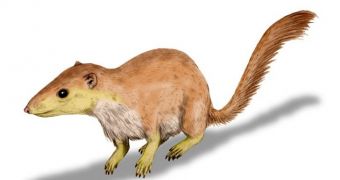Only a couple of days back, a team of scientists made it public news that, according to their latest findings, the first human ancestor was not all that different from a squirrel.
The world's oldest primate was thoroughly described during the latest annual meeting of the Society of Vertebrate Paleontology, which took place in North Carolina.
The scientists explained that the fossilized bones they studied showed them that this primitive primate, officially known as Purgatorius, had a mobile ankle joint which allowed it to live in trees and move around amongst their trunks and branches.
It is the specialists' belief that is was this mobile ankle join that allowed primates to be quite successful in terms of evolution.
These mammals were rather small and displayed a bushy tail. As well as this, it seems they had a lot of teeth, molars included.
“These new fossils support the idea that the first 10 million years of primate evolution happened in the context of an intense period of similar diversification in flowering plants, including the ability to climb in branches and collect fruits and other products of the trees at the very beginning,” researcher Jonathan Bloch explains.

 14 DAY TRIAL //
14 DAY TRIAL //